Plastic waste has become a global concern, with its impact on the environment and human health increasing day by day. Researchers and scientists are constantly looking for innovative solutions to tackle this problem. One such solution might lie within an unexpected source – saliva.
Saliva, commonly known as spit, is a vital fluid produced by our salivary glands. Its primary function is to aid in the digestion of food, but recent studies have shown that it may have surprising effects on plastic degradation as well.
Plastic is notorious for its slow degradation process, taking hundreds of years to break down naturally. However, preliminary research suggests that saliva, with its unique composition of enzymes and other organic compounds, may have the potential to accelerate the breakdown of certain types of plastics.
Scientists have found that saliva contains enzymes like lipase and amylase, which are known for their ability to break down fats and starches, respectively. These enzymes could potentially target the molecular structure of plastics and initiate a process called hydrolysis, where the plastic is broken down into smaller, more manageable fragments.
- Can Saliva Break Down Plastic?
- The Science Behind Saliva’s Effects on Plastic
- Potential Applications and Future Research
- Discovering the Effects
- The Role of pH
- Implications for the Environment
- The Surprising Role of Enzymes
- Understanding the Degradation Process
- The Role of pH
- Factors Affecting Degradation
- Question-answer
- Is it true that saliva can break down plastic?
- How does saliva break down plastic?
- What types of plastic can saliva break down?
- Can saliva completely degrade plastic?
- What are the implications of saliva breaking down plastic?
Can Saliva Break Down Plastic?
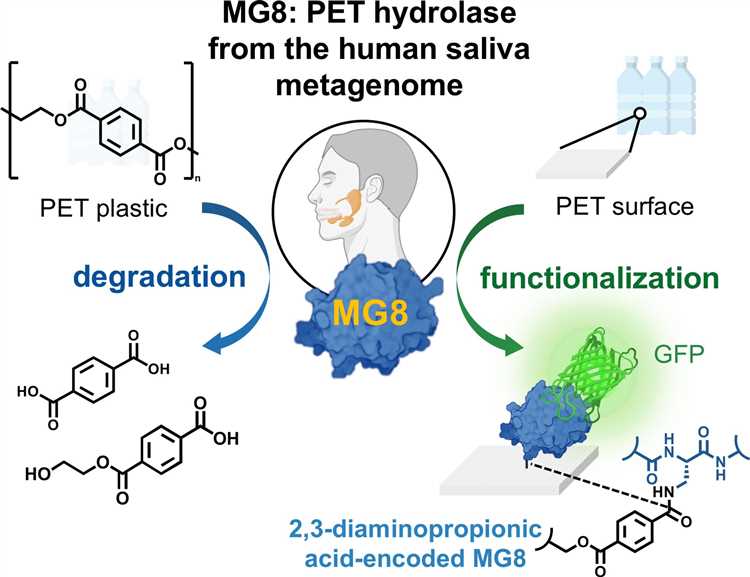
Plastic pollution is a serious concern for the environment, and scientists are constantly searching for ways to combat this issue. One area of research that has recently caught the attention of experts is the potential of saliva to break down plastic.
Saliva is a complex fluid that contains a variety of enzymes, proteins, and other organic compounds. These components play a crucial role in the digestion of food, helping to break down complex molecules into simpler forms that the body can absorb and use for energy.
The Science Behind Saliva’s Effects on Plastic
Recent studies have suggested that saliva may also have the ability to break down certain types of plastics. One study published in the journal Environmental Science & Technology found that enzymes present in human saliva, such as amylase, could degrade thin films of polyethylene terephthalate (PET) plastic. PET is commonly used in single-use plastic bottles.
The research team exposed PET films to human saliva and monitored their degradation over time. They found that the saliva was able to break down the plastic, resulting in thinner films and visible deterioration. While the process was slow, the researchers concluded that saliva could potentially be used as a tool to aid in plastic degradation.
Potential Applications and Future Research
The discovery that saliva can break down plastic opens up new possibilities for addressing plastic pollution. If scientists can harness the power of saliva to enhance the degradation of plastic, this could contribute to the development of more sustainable materials and reduce the impact of plastic waste on the environment.
However, there is still much research to be done in this field. Scientists need to explore the specific mechanisms by which saliva breaks down plastic and identify the optimal conditions for this process to occur. Additionally, they need to investigate the potential limitations and risks associated with using saliva for plastic degradation.
| Potential Benefits | Potential Risks |
|---|---|
| Reduced plastic pollution | Unintended consequences |
| Development of sustainable materials | Efficiency and scalability |
| Environmental preservation | Health and safety implications |
In conclusion, while the idea of using saliva to break down plastic shows promise, further research is needed to fully understand its potential and limitations. The scientific community continues to investigate this intriguing possibility in the ongoing effort to combat plastic pollution and protect our environment.
Discovering the Effects
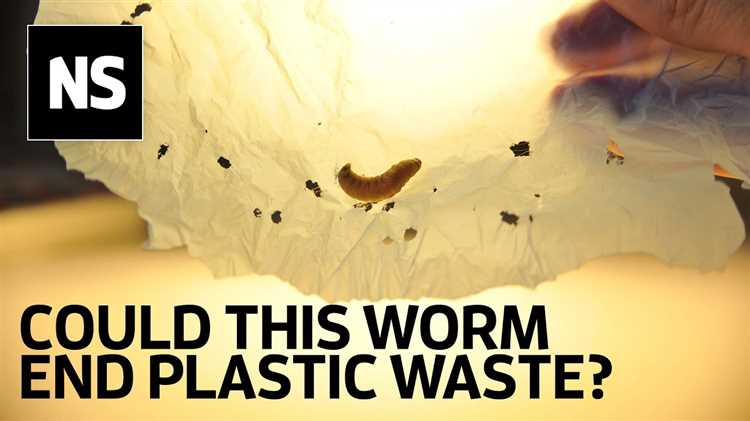
Scientists have been conducting extensive research to understand the effects of saliva on plastic degradation. They have discovered that saliva does indeed play a role in breaking down certain types of plastics.
One of the main reasons saliva has an effect on plastic degradation is its composition. Saliva contains enzymes like amylase and lipase, which are capable of breaking down organic compounds found in plastics. These enzymes break down the chemical bonds of the plastic polymers, leading to their degradation.
Furthermore, studies have found that saliva can also have an impact on the surface properties of plastics. It has been observed that saliva can cause changes in the surface roughness and topography of plastics, making them more susceptible to microbial degradation.
The Role of pH
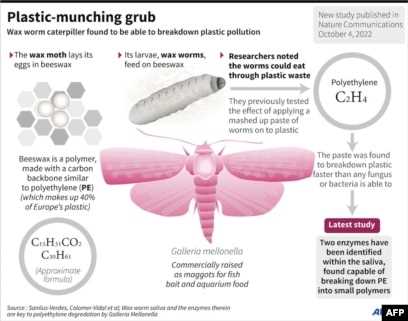
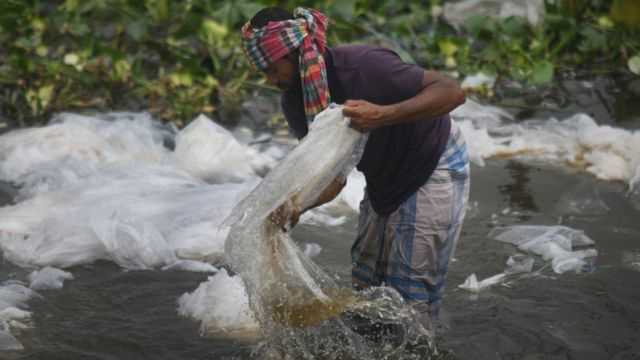
The pH level of saliva is another factor that influences its effects on plastic degradation. Saliva has a slightly acidic pH, ranging from 6.2 to 7.6, which can accelerate the degradation process of certain plastics. This acidic environment can weaken the chemical structure of plastics, making them more prone to degradation.
However, it is important to note that not all types of plastics are affected in the same way by saliva. Some plastics, like polyethylene and polypropylene, are more resistant to degradation and have been found to be less affected by saliva. On the other hand, plastics like polylactic acid (PLA) and polycarbonate have been observed to be more susceptible to saliva-induced degradation.
Implications for the Environment
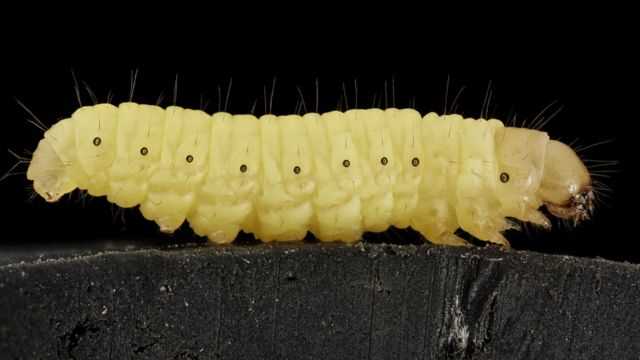
The findings regarding the effects of saliva on plastic degradation have important implications for the environment. Understanding how saliva interacts with plastics can help in the development of more effective and sustainable waste management strategies.
For instance, this knowledge can lead to the development of saliva-based solutions for plastic degradation, potentially reducing the environmental impact of plastic waste. Additionally, it highlights the importance of proper disposal of plastics to prevent the contamination of saliva or other organic fluids, which can accelerate the degradation process.
In conclusion, saliva has been found to have surprising effects on plastic degradation. Its composition, pH level, and microbial properties all contribute to its ability to break down certain types of plastics. This research opens up new possibilities for tackling plastic waste and emphasizes the need for responsible plastic disposal.
The Surprising Role of Enzymes
Enzymes play a crucial role in the degradation of plastic by saliva. These biological molecules catalyze chemical reactions and speed up the breakdown process, making it possible for saliva to break down plastic.
Specific enzymes present in saliva are responsible for breaking down certain types of plastics. For example, a study found that an enzyme called polyethylene terephthalate (PETase) can break down PET plastic, which is commonly used in beverage bottles. Other enzymes, such as lipases and proteases, may also contribute to the degradation of different types of plastic.
Enzymes work by binding to specific molecules, called substrates, and transforming them into different molecules. In the case of plastic degradation, enzymes attach to the plastic molecules and start breaking the bonds holding them together. This process, known as hydrolysis, leads to the breakdown of the plastic into smaller fragments, making it easier for microorganisms to further degrade it.
Saliva contains a variety of enzymes, including amylase, which breaks down carbohydrates, and lipase, which breaks down fats. These enzymes are naturally present in the mouth to aid in the digestion of food. However, they can also interact with plastic, initiating the degradation process.
It is important to note that while enzymes in saliva can contribute to the breakdown of plastic, their efficiency may vary depending on factors such as the type of plastic and the conditions in the mouth. Further research is needed to fully understand the mechanisms behind enzymatic plastic degradation and to explore its potential applications in waste management and recycling.
Understanding the Degradation Process
When it comes to understanding how saliva breaks down plastic, it is important to consider the degradation process. Plastic degradation refers to the breakdown of plastic materials into smaller components, which can eventually lead to their complete disintegration.
Saliva contains various enzymes, such as amylase and lipase, that play a role in the degradation process. Amylase, for example, is an enzyme that breaks down complex carbohydrates into simpler sugars.
When saliva comes into contact with plastic, the amylase enzyme starts to break down the chemical bonds within the polymer structure. This process is known as hydrolysis, where water molecules are used to break down the polymer chains.
The Role of pH
The pH level of saliva also plays a crucial role in the degradation process. Saliva is slightly acidic, with a pH range of 6.2 to 7.6. Acidic conditions can accelerate the breakdown of plastics, especially those made from polymers such as polyethylene and polypropylene.
Acid hydrolysis can occur when saliva interacts with these types of plastics, causing the polymer chains to break apart. The acidic environment created by the saliva can weaken the plastic and make it more susceptible to degradation.
Factors Affecting Degradation
Several factors can affect the rate of plastic degradation by saliva. These include the type of plastic, the duration of exposure, the concentration of enzymes in saliva, and the overall condition of the plastic.
Plastics with higher molecular weights tend to be more resistant to degradation, as their polymer chains are more tightly packed and less susceptible to hydrolysis. On the other hand, plastics with lower molecular weights are more easily broken down by saliva.
The longer the plastic is exposed to saliva, the greater the chance of degradation. Higher concentrations of enzymes in saliva can also speed up the degradation process. Additionally, plastics that are already damaged or have cracks are more likely to degrade faster when in contact with saliva.
It is important to note that the degradation process may vary depending on the specific type of plastic and the composition of the saliva. Further research is needed to fully understand the mechanisms behind saliva’s effects on plastic degradation.
In conclusion, saliva can indeed break down plastic through the process of hydrolysis. The enzymes present in saliva, along with its slightly acidic pH, contribute to the degradation of plastics over time. However, the extent and speed of degradation depend on various factors, including the type of plastic and the conditions of exposure.
Question-answer
Is it true that saliva can break down plastic?
Yes, it is true. Saliva contains enzymes that have the ability to break down some types of plastic.
How does saliva break down plastic?
Saliva contains enzymes, such as amylase and lipase, that have the ability to break the chemical bonds in some types of plastic. These enzymes can degrade plastic and eventually break it down into smaller compounds.
What types of plastic can saliva break down?
Saliva has been found to break down polylactic acid (PLA), a biodegradable plastic commonly used in disposable food containers and packaging. However, it is not effective in breaking down all types of plastic.
Can saliva completely degrade plastic?
No, saliva alone cannot completely degrade plastic. While saliva can break down some types of plastic, the process is not efficient enough to completely degrade it. Additional methods, such as exposure to heat or specialized bacteria, may be required to fully degrade plastic.
What are the implications of saliva breaking down plastic?
The discovery that saliva can break down plastic has potential implications for biodegradable plastic waste management. It could lead to the development of new strategies for plastic degradation and recycling, reducing the environmental impact of plastic waste.